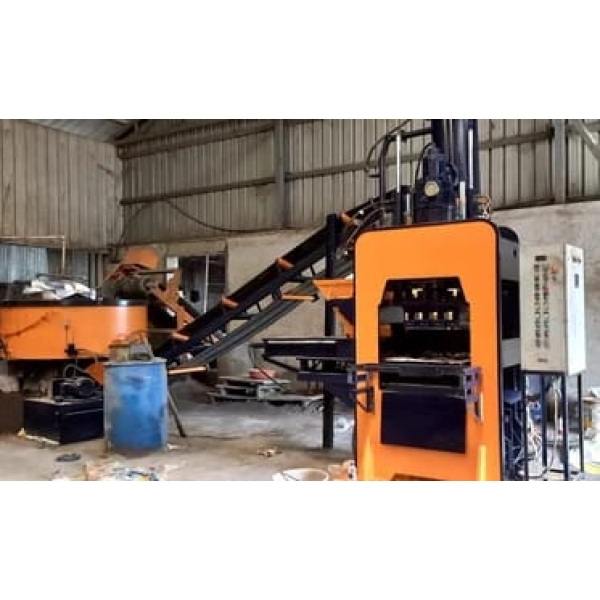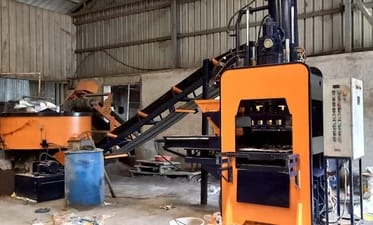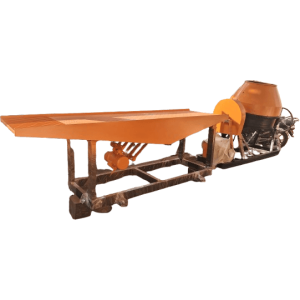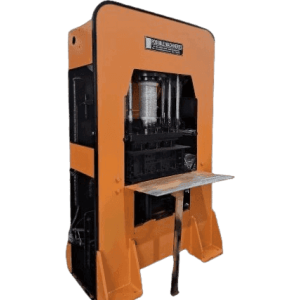CSEB AUTOMATIC SOIL INTERLOCKING HOLLOW BLOCKS MAKING PLANT
₹4,636,220.00
CSEB Automatic Soil Interlocking Hollow Blocks Making Plant – Fully automated system for producing eco-friendly, high-strength interlocking hollow blocks using compressed stabilized earth, ensuring precision, durability, and cost-effective construction.
Description
(CSEB) Compressed Stabilised Earth Blocks
Chemical Free Living
Dry Method of Construction
High Quality Hollow Block
Easy Plumbing and Electrication
Non Burnt Soil Block
Well designed asthetics
Shed Requirement 50 x 80 FT
Power Requirement 40 HP
Hydraulic Forcess – 50 – 60 Tons
Man Power Requirement – 8 – 10 Labours
Easy Mode of Operation
Block pick and drop mechanism
Block accuracy
in size + 0.6 mm
in Height + 0.8 mm
Screws Fitted Alloy Molds –
Replaceable Liners, Enhances Mold life
300 x 150 x 90 mm
250 x 250 x 90 mm
250 x 125 x 90 mm
150 x 150 x 90 mm
CSEB Automatic Soil Interlocking Hollow Blocks Making Plant: Machinery Overview
Building the Future with Automation and Earth-Friendly Innovation
As the construction industry increasingly shifts towards sustainability and cost-efficiency, Compressed Stabilized Earth Blocks (CSEB) have emerged as a top choice for eco-conscious builders. The use of Automatic Soil Interlocking Hollow Blocks Making Plants is growing rapidly, offering a complete mechanized solution to produce high-quality, interlocking blocks from local soil. These blocks reduce construction costs, eliminate the need for mortar in some cases, and promote green building practices.
This article outlines the key machinery typically used in a CSEB automatic plant and explains how each component contributes to the block production process.
Essential Machinery in a CSEB Automatic Block Making Plant
1. Soil Crusher / Pulverizer
Function: Breaks down soil lumps and removes unwanted debris like stones and roots.
Importance: Ensures fine and uniform soil texture for consistent block quality.
2. Soil Sieving Machine
Function: Screens soil to the desired particle size (typically 2-4 mm).
Automation: Available as vibrating or rotary screens.
Output: Clean, fine soil ready for mixing.
3. Pan Mixer / Ribbon Mixer
Function: Homogenizes the mix of soil, stabilizer (cement/lime), and water.
Types: Manual, semi-automatic, or fully automatic mixers with water dosing systems.
Benefits: Ensures a uniform and consistent mix for each batch.
4. Automatic Block Making Machine (Hydraulic Press)
Function: Compresses the mixed material into interlocking block shapes using high-pressure hydraulic systems.
Features:
Interchangeable molds for different block types (solid, hollow, interlocking)
Programmable Logic Controller (PLC) for automation
Output capacity: Ranges from 500 to 5000 blocks/day based on the machine type
Output: Precision-formed blocks with high strength and durability
5. Conveyor Belts
Function: Transfers raw materials between machines (e.g., soil to mixer, mix to press).
Advantages: Reduces manual handling and increases efficiency.
6. Block Ejector and Stacking Unit
Function: Automatically removes and stacks the compressed blocks.
Optional Add-on: Robotic arms or automated trolleys for stacking and moving.
7. Curing Racks / Shelters
Function: Blocks are kept here for air-curing (usually 7–28 days depending on stabilizer).
Automation Option: Some setups use controlled-humidity curing chambers for faster production.
Optional & Advanced Machinery Additions
Moisture Control Sensors: Monitor soil moisture in real-time and adjust water input automatically.
Block Surface Finishing Machine: Adds textures or designs to block surfaces.
Automated Material Feeding Systems: Reduces manual loading efforts and speeds up mixing cycles.
Production Flow Summary
Raw Soil Collection
Crushing & Sieving
Mixing with Stabilizer & Water
Conveying to Press
Block Compression
Ejection and Stacking
Curing and Drying
Benefits of a Fully Automated CSEB Plant
Consistent Block Quality due to uniform mixing and compression.
Labor Cost Reduction via automation.
Increased Production Rate, ideal for commercial and mass housing projects.
Eco-Friendly Operations, using local soil and reducing carbon emissions.
Customization with different mold types and sizes.








Reviews
There are no reviews yet.